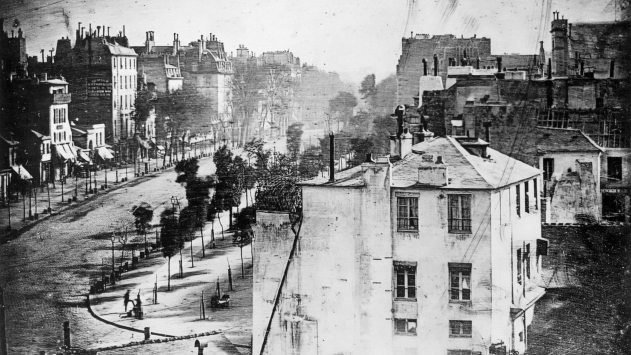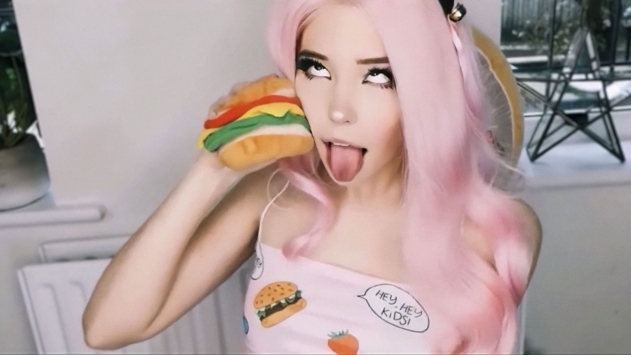-min.jpeg)
Filmmakers Axel Danielson and Maximilien Van Aertryck’s debut feature documentary AND THE KING SAID, WHAT A FANTASTIC MACHINE cuts through the history of the moving image to examine how people have looked at themselves and the social consequences of that obsession over time. The film was produced by the Ruben Östlund-founded production company Plattform Produktion which Danielson and Van Aetyck now co-own. FANTASTIC MACHINE won the World Cinema Documentary Special Jury Award: Creative Vision at the 2023 Sundance Film Festival. It will go on to make its European premiere at the Berlinale. We spoke with the directors about the filmmaking process and media literacy.
Science & Film: How did you work together on FANTASTIC MACHINE?
Max Van Aertryck: We made a lot of shorts together but this is our first joint feature. Me and Axel are a film duo, most of the time as producers and directors. We really believe that filmmaking is a collaborative effort. We feel films can only become better when you let people you trust give you a lot of input. We collaborated with another director at our company named Mikel Cee Karlsson who is also one of the editors of TRIANGLE OF SADNESS. He was a huge help to build the narrative arcs and put in place the composition of the film, which was the biggest challenge for us.
S&F: How did you find your way into this very large subject?
Axel Danielson: This topic, how the photographic image affects us as humans and our society, that’s something that Max and I have been interested in for many years. We are a small company, including our colleague Ruben Östlund with his film TRIANGLE OF SADNESS, that collaborates a lot on our films. It’s really fun when you start looking at material knowing that there is something being staged in front and an intent behind, then almost every image becomes funny and scary at the same time. So, we’ve been collecting this material like golden nuggets and then five years ago we thought, we should make a film out of it.
MVA: In this project, the images really came first and then we worked on the structure. The core idea was: we want to use these clips that we love and want to contextualize them. The idea to go back to 1828 came as we were working with the narration of the film. We thought, maybe we need to show the first images, how a camera works, to be able to ask the question, what to do now with this invention? The camera obscura is fascinating and magical every time you enter it. The image is not an invention, it’s more a discovery. But the camera and the photographic image that is a human invention. There is something beautiful about this.

Still from FANTASTIC MACHINE. Courtesy of Sundance Institute | Photo by Louis Daguerre.
AD: In the scene in the beginning of the film when we build a camera obscura and invite people in, they are so fascinated by how it is possible. People who take a hundred photographic images a day don’t reflect on what they are. We wanted to have some of these concepts in the film to move towards today’s content industry and never-ending stream of photographic images.
S&F: While collecting nuggets of footage over the years, how did you identify what was valuable in that search?
MVA: There are many thoughts, ideas, observations in the film so different material we loved or found fascinating for different reasons. That footage contains examples of something that we think if we look at it together it can be a good reference for a societal phenomenon that we want to talk about. For example, the man who comes to the BBC for a job interview and is mistaken for an expert, that is such a great image of how we humans at the core are an imitating species. But also of the way the dramaturgy of media works; you don’t really need to know what you’re talking about, you just need to look like you know. Also, the old footage from the 1890s of the train entering the station, some of the very first images produced, we did not want to talk about them as the history of cinema but rather how has the camera, this machine, been incorporated into an already existing economy? First, the Lumière Brothers filmed what was near them to show movement, but then one year later someone finds a business model filming crowds of people, and then the first erotic films get produced. The point of the film was to go through a lot of different thoughts to create a sense of urgency that this photographic image has a huge impact on a lot of different societal layers.
AD: We never took it upon ourselves to do a full survey of the moving image. For us it was about its impact on society. We wanted to engage in media literacy—UNESCO, UN programs that are so connected with democracy—and what we need to know as a society. We think the camera is a fantastic machine. It’s a super important tool, but we are not very sure we can let five huge companies decide its ethics. There needs to be some common knowledge about this [technology].

Belle Delphine in FANTASTIC MACHINE. Courtesy of Sundance Institute | Photo by Belle Delphine.
S&F: Do you have a certain generation in mind as viewers of this film? Thinking about media literacy there is a huge range between ages in the relationship to technology.
AD: In a way, it’s the coming generations that are the hope for maturing into this technology. But we didn’t make the film thinking about a generation. When you make your film, you have to trust your own interests.
MVA: We feel a bit in the middle [of generations] because we were not born with the camera in our hands, but because we’re filmmakers we have a lot of first-hand experience of how the camera works. In the research for the film, we were both driven by wanting to use certain examples but also by curiosity and discovering phenomena we didn’t know about. It’s interesting that the older and younger generations have both reacted quite positively at Sundance. There was one very old man who said, I’ve never seen so much TikTok in my life, so it made me understand something. The younger audience likes the film because it is quite fast paced, so reminds them of dopamine scrolling, and what they’ve told us is that they can laugh with the film, but in the next moment they swallow their laugh because something very serious happens. This kind of contrasting narration keeps them hooked, in a way. We really want to go into schools with this film and into the educational field to discuss these questions with a younger audience.
AD: It was also important for us to bring images from social media up on a screen, to watch them together. The cinema is something really special because you have to share your experience of what is delivered to you, so a shared experience of these produced images was really important to us. The cinema is something that we think should be a place where you go to discuss the images that are important to you as a community, much more than an entertainment venue.
♦
TOPICS